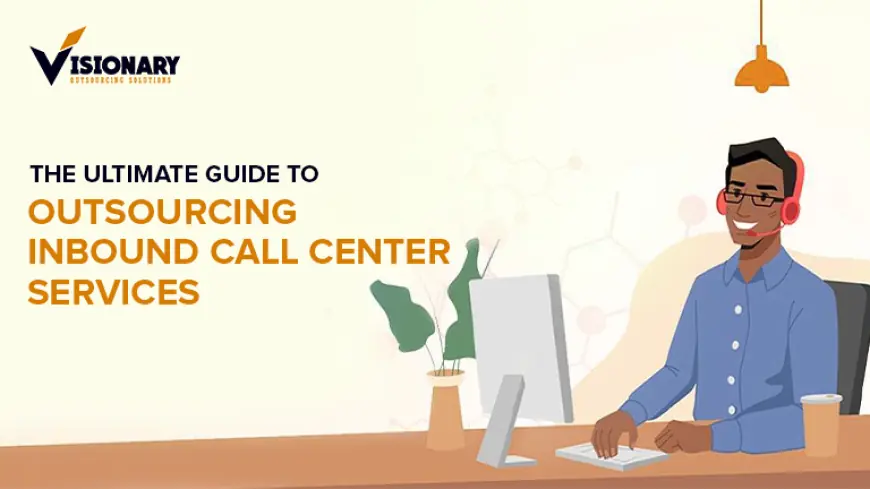Why Inbound Customer Service Outsourcing Is the Future of Customer Support
Let me start with something we all know but don’t always say out loud: handling customer service can be exhausting. Especially when your business starts to grow and the phone just won’t stop ringing. Been there, done that.

I remember helping out at a friend’s e-commerce store a while back. One weekend, we got featured on a blog, and boom—orders exploded. That was the good part. The not-so-good part? We had no clue how to keep up with the customer calls. People were calling for tracking updates, wrong sizes, billing questions—you name it. We were scrambling.
That experience made something super clear to me: inbound customer service outsourcing isn’t just a nice-to-have. For growing businesses, it’s quickly becoming a must.
What Does a Call Center Customer Service Team Actually Do?
Let’s break it down. When most people think “call center,” they imagine a giant room filled with folks wearing headsets and saying, “Your call is important to us.” But there’s a lot more going on behind the scenes.
A solid inbound customer service team will:
- Answer incoming calls and emails from customers
- Troubleshoot issues
- Process returns or track shipments
- Offer product guidance
- Just… be there when your customers need someone
And when it’s done well? It’s magic. It’s the voice on the other end of the phone that turns a frustrated buyer into a lifelong fan.
Building Real Relationships Through Inbound Support
There’s a story I always tell. A couple years ago, I had an issue with my internet provider (shocker, right?). After three transfers and 45 minutes of waiting, I finally got someone on the line who was—get this—actually helpful. She even made a joke that cracked me up. I was ready to cancel everything, but instead, I stayed with them. All because of one good rep.
That’s the power of great inbound answering services. It’s not just about answering calls. It’s about connecting with people.
Customers can tell when they’re just a number on a screen. And they can definitely tell when the person helping them actually gives a damn.
Why Outsourcing Makes Sense (Especially When You’re Growing)
So here’s the deal: If you’re a small business or a company in growth mode, trying to do it all in-house is like trying to build a house while the roof’s on fire. Sure, it sounds noble. But it’s just not sustainable.
Outsourcing inbound call answering services gives you:
- Breathing room – Stop answering the phone at 10 p.m. because your team is fried.
- Professional support – These folks do this for a living. They know customer service.
- More hours in the day – No more juggling support while trying to grow your brand.
- Happy customers – Which means better reviews, more referrals, and more sales.
It’s not about passing the buck. It’s about getting help from people who are really good at this stuff, so you can focus on what you do best.
Why Inbound Answering Services Really Matter
Let me paint a picture.
A customer’s package doesn’t arrive. It’s been five days past the delivery date. They’ve emailed, no response. Now they call.
If no one answers, or worse—they get sent through a maze of options only to land in voicemail? You’ve probably lost that customer for good.
But if a human being picks up and says, “I’m so sorry, let me look into that for you”—that right there is the difference between a one-star review and a glowing one.
This is exactly why inbound answering services are worth every penny. People want to be heard. They want to feel like someone has their back. And a fast, friendly response does more than just fix the problem—it builds loyalty.
So… How Do You Actually Outsource the Right Way?
If you’re thinking about inbound customer service outsourcing, here’s how to do it without the headache:
1. Choose a partner, not a robot
Don’t just look for the lowest bidder. Talk to real people. Ask about their training process, values, how they handle angry customers, all of it.
2. Teach them like they’re part of your team
You want them to sound like you, not some generic call center. Share your tone, common issues, even customer slang if you have it.
3. Start small
Try outsourcing one channel—maybe phone calls during after-hours or just email support. Test the waters before diving in.
4. Check in often
Listen to calls. Ask for weekly reports. Make sure things are going smoothly and stay in the loop.
5. Be honest about what you need
If you’re overwhelmed, say so. A good outsourcing partner will work with you, not just for you.
Wrapping It Up
At the end of the day, customers just want someone to pick up the phone and care. And if your team is already maxed out, outsourcing your inbound customer service might be the best decision you make.
Not because you’re giving up control, but because you’re doubling down on customer experience.
I’ve seen it firsthand—when it’s done right, it’s not just support. It’s a growth strategy.
Thinking about outsourcing your inbound call center needs but not sure where to start? I’ve been in those shoes. Feel free to reach out—I’d be happy to share what worked for me and point you toward some solid partners.
What's Your Reaction?
 Like
0
Like
0
 Dislike
0
Dislike
0
 Love
0
Love
0
 Funny
0
Funny
0
 Angry
0
Angry
0
 Sad
0
Sad
0
 Wow
0
Wow
0


















































